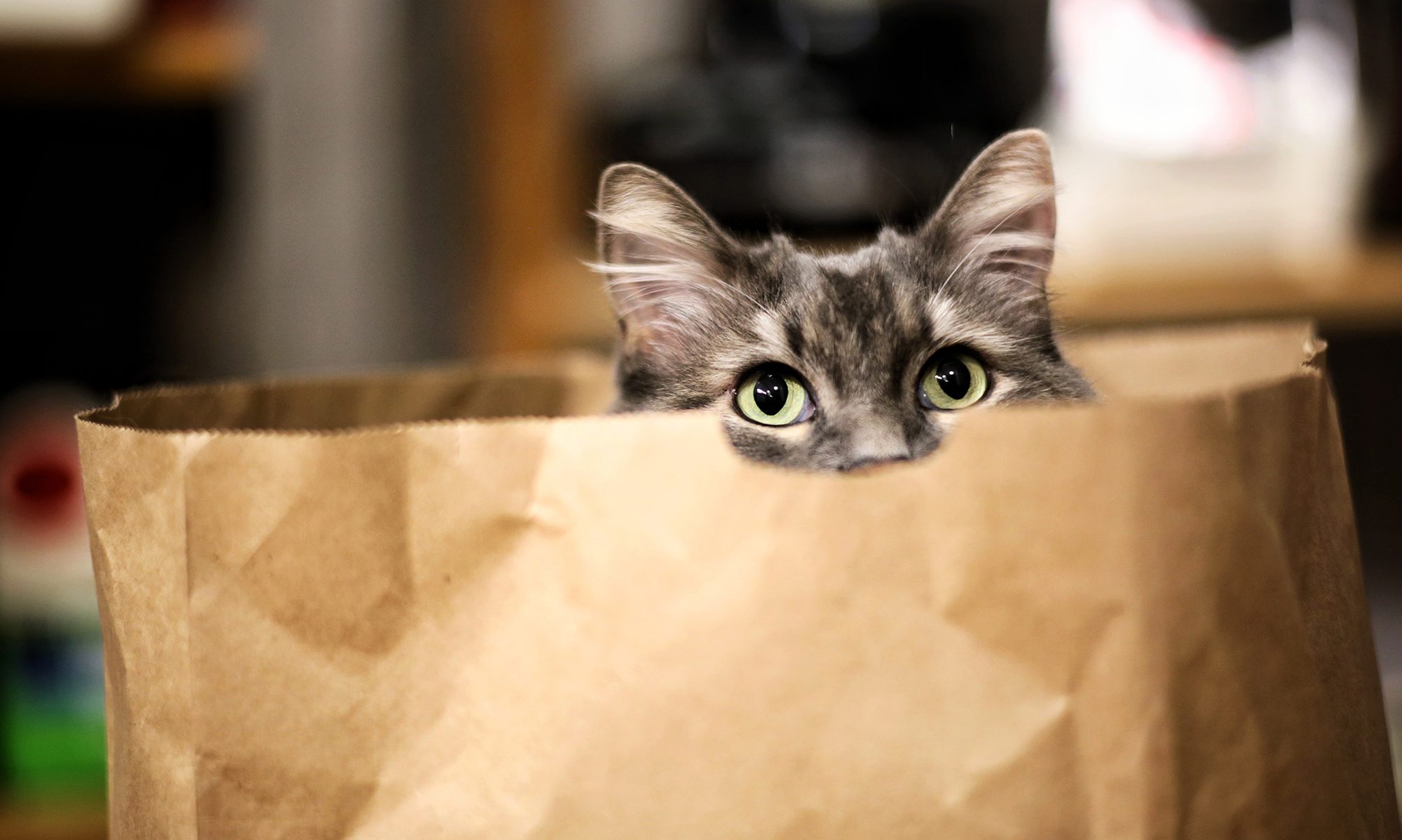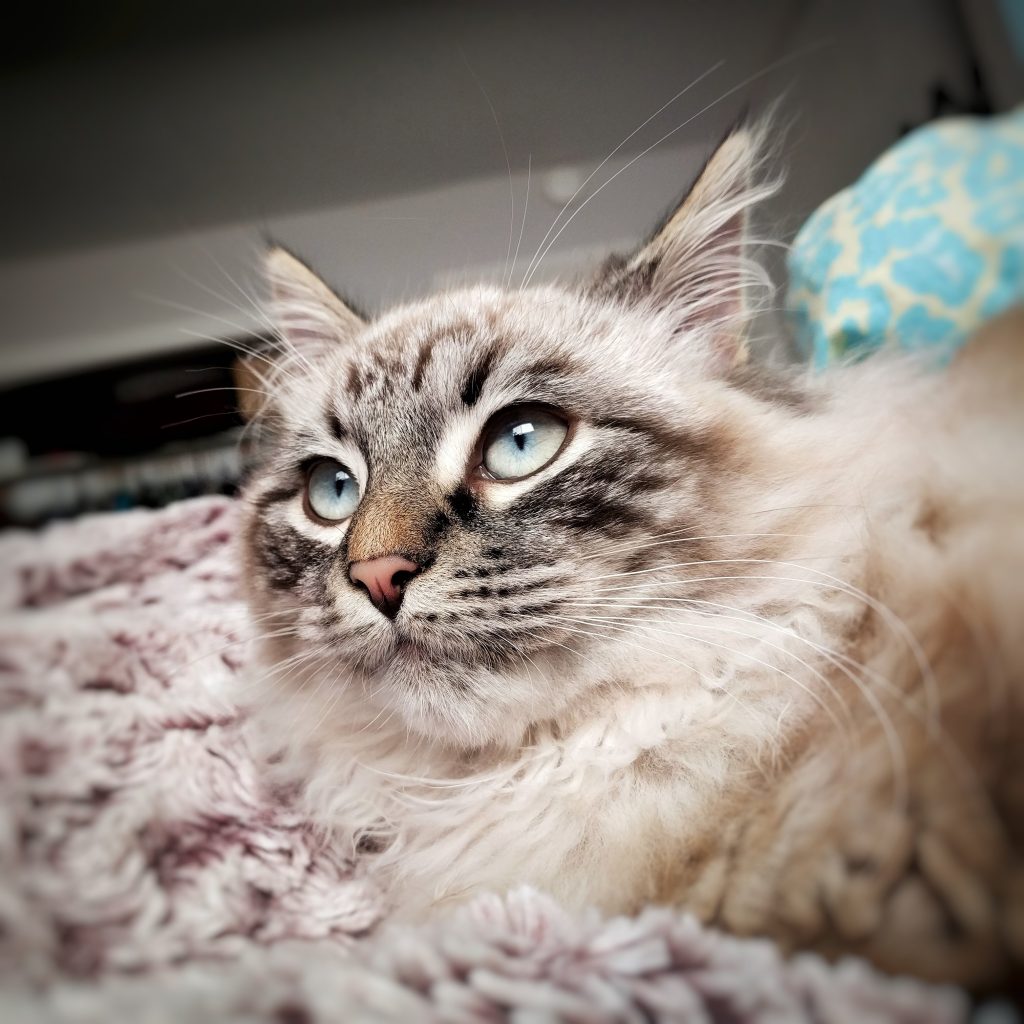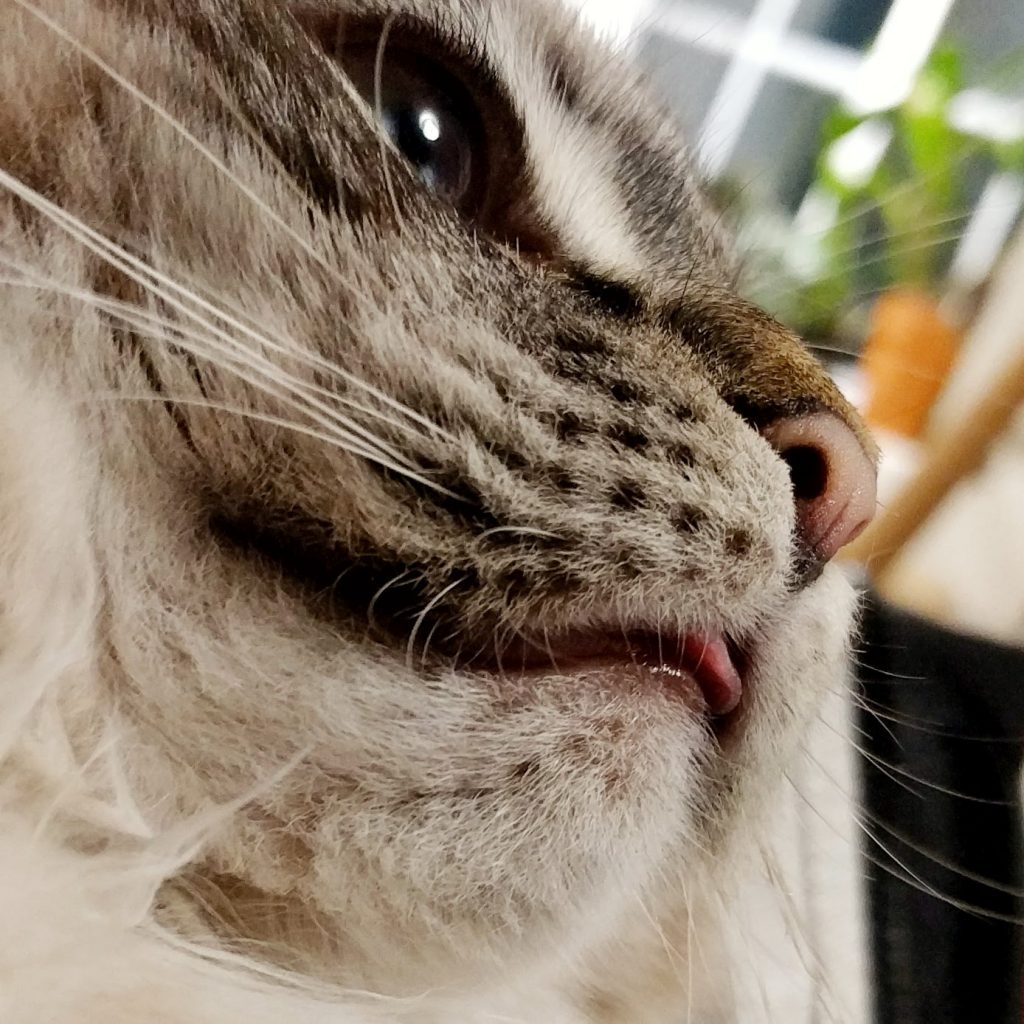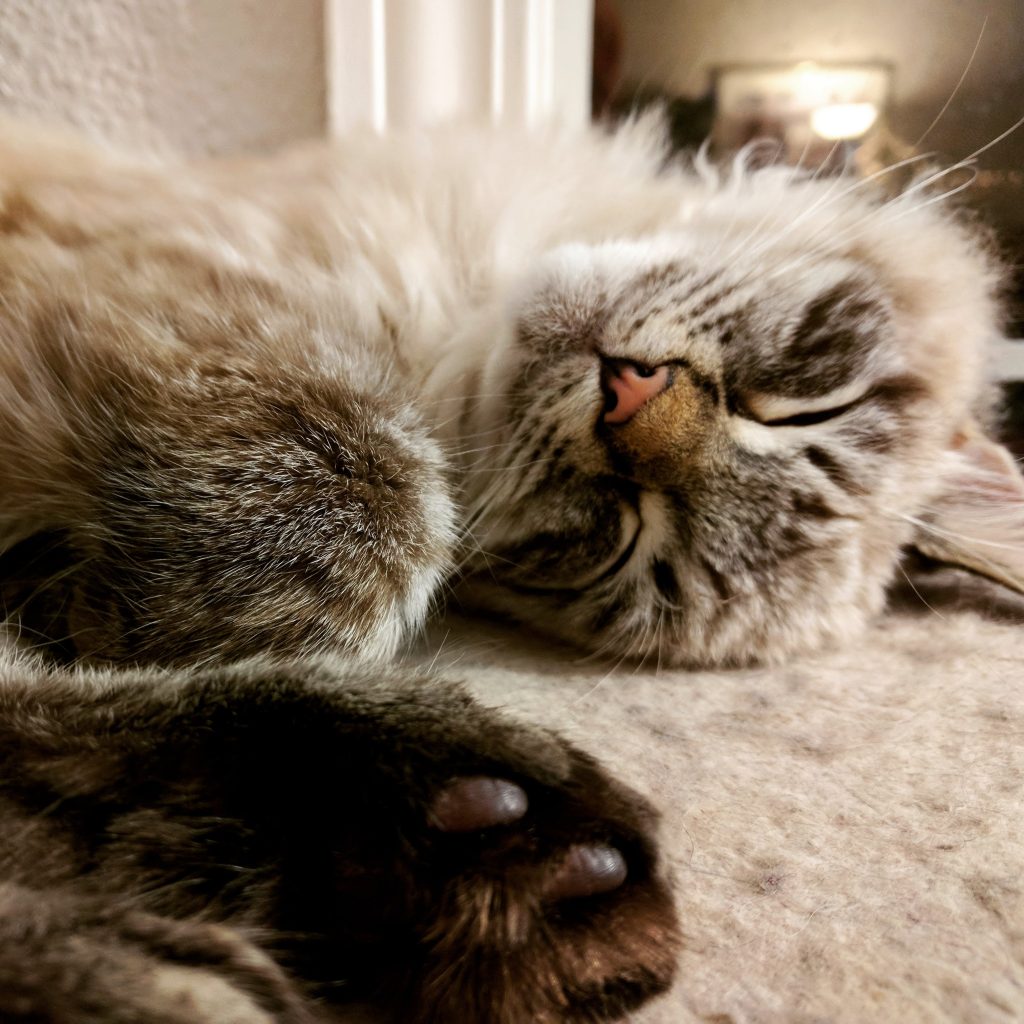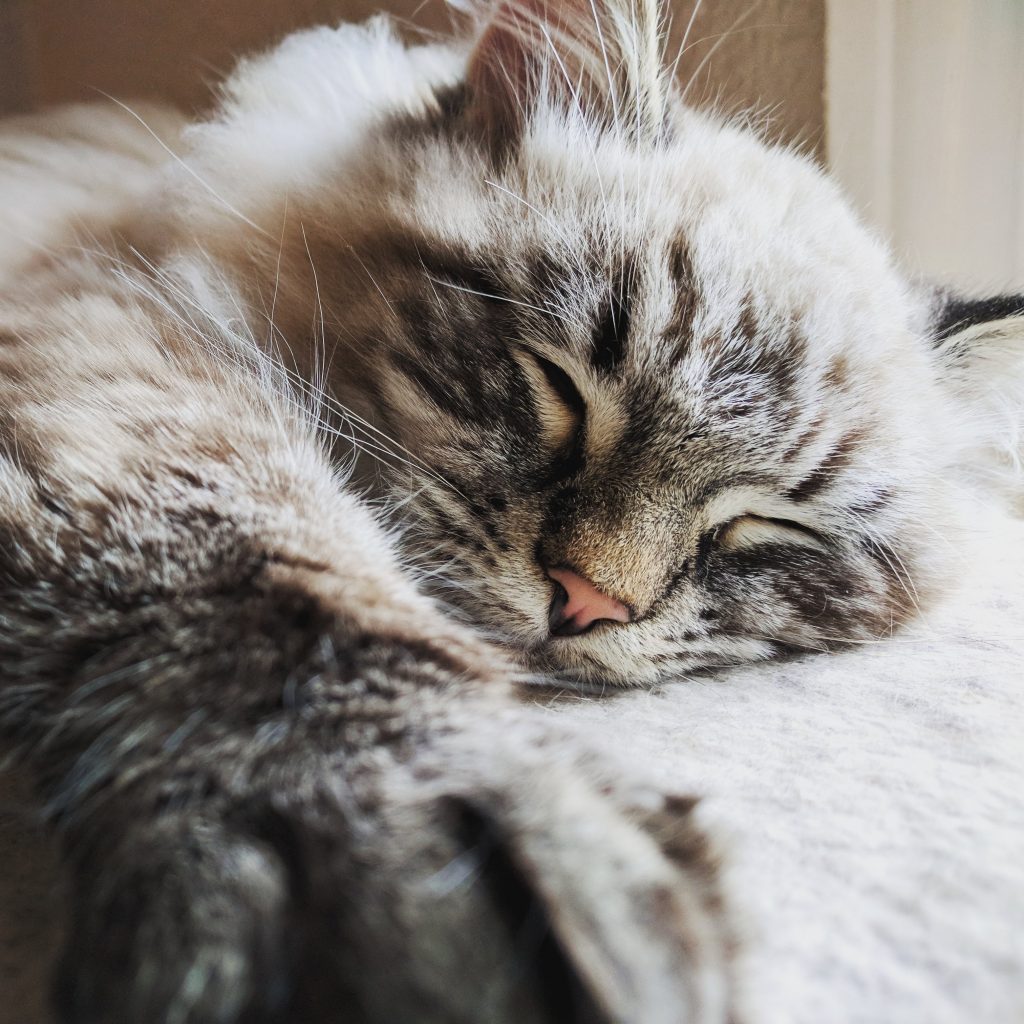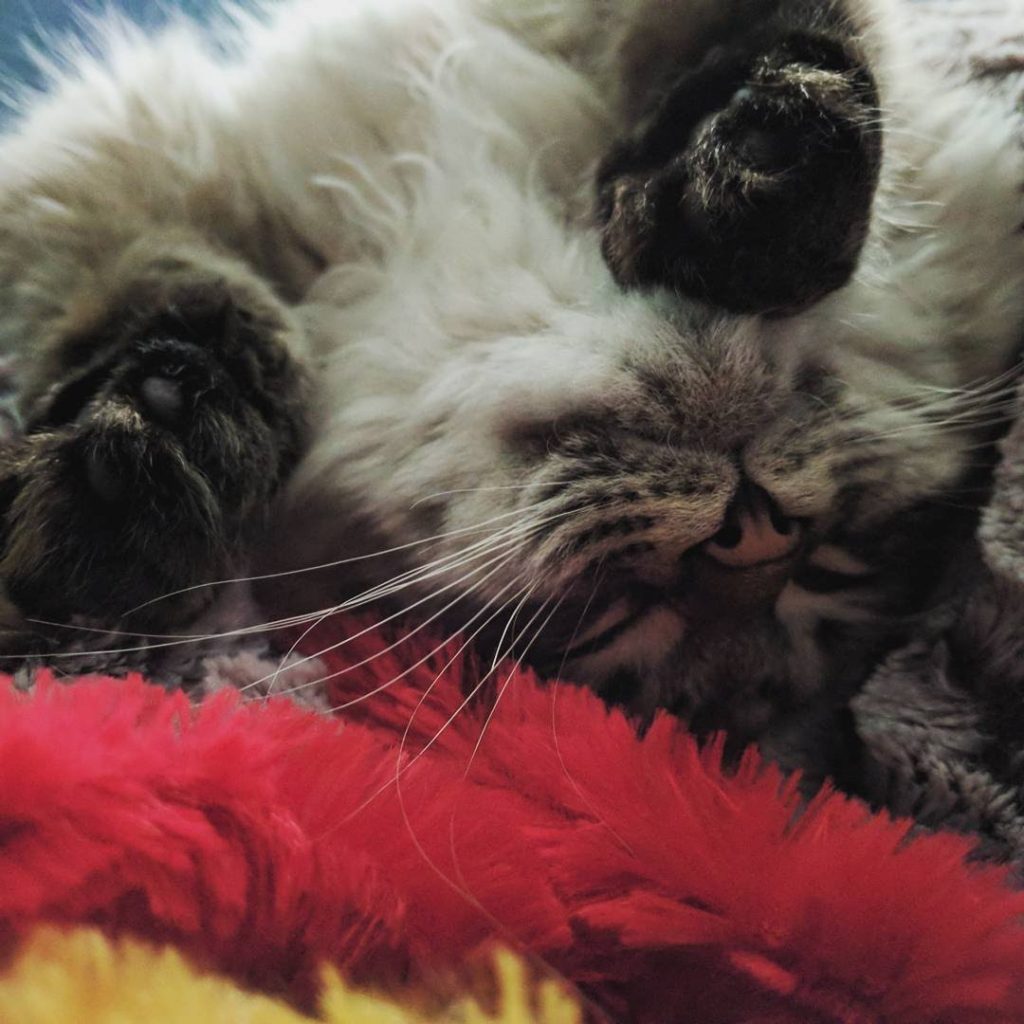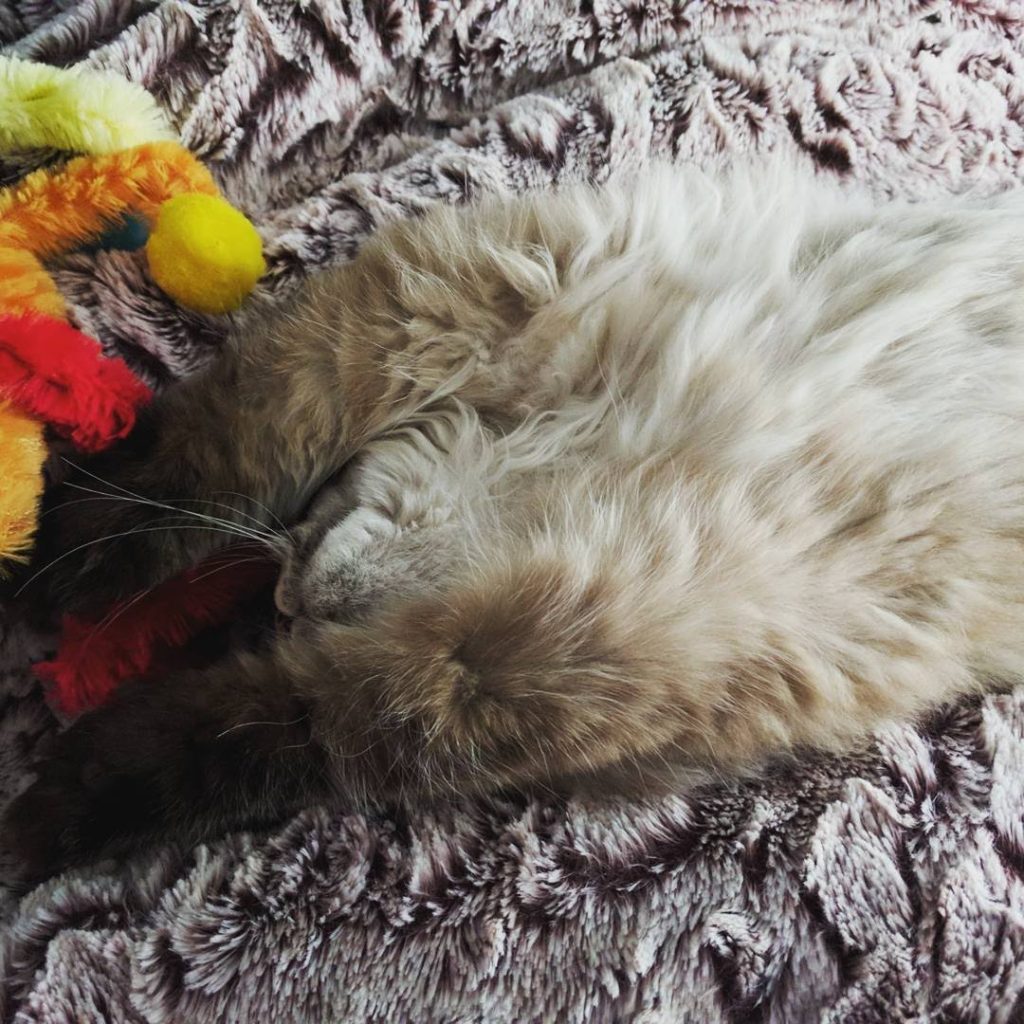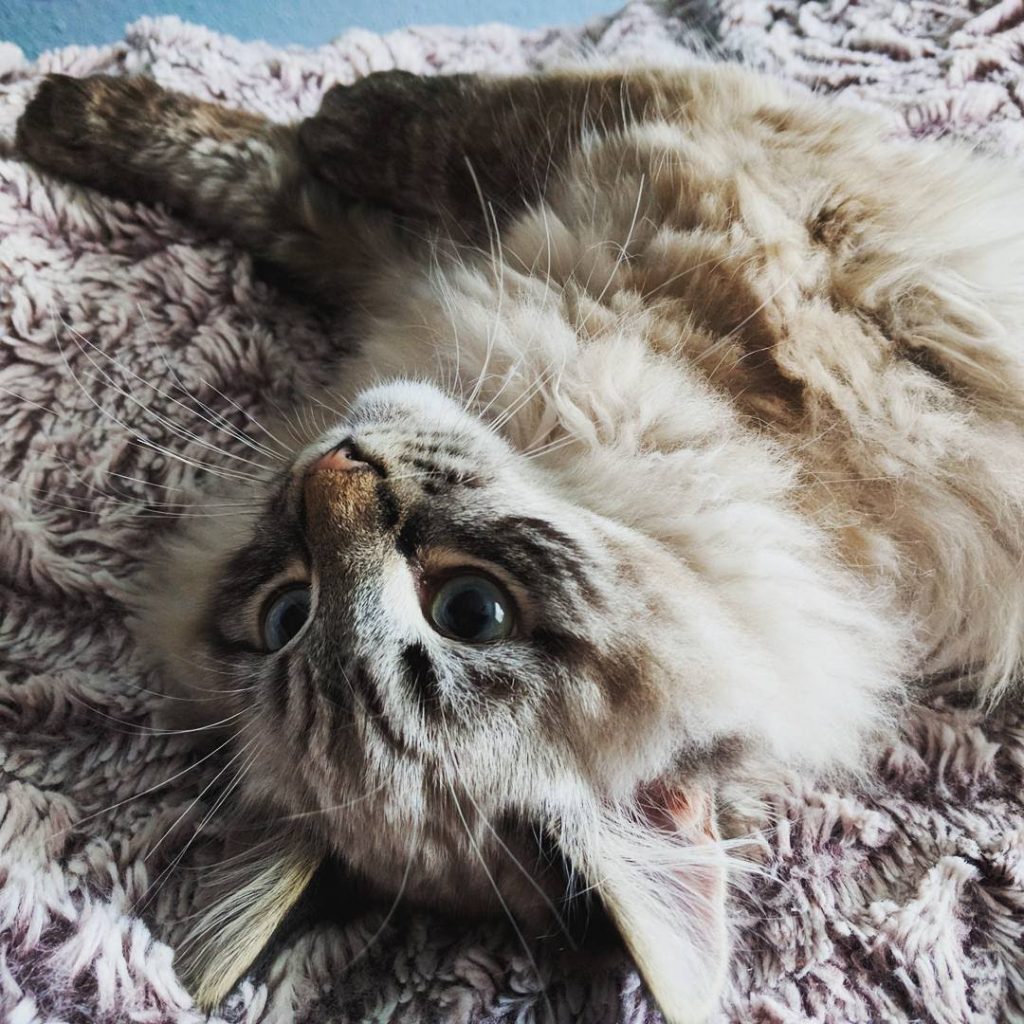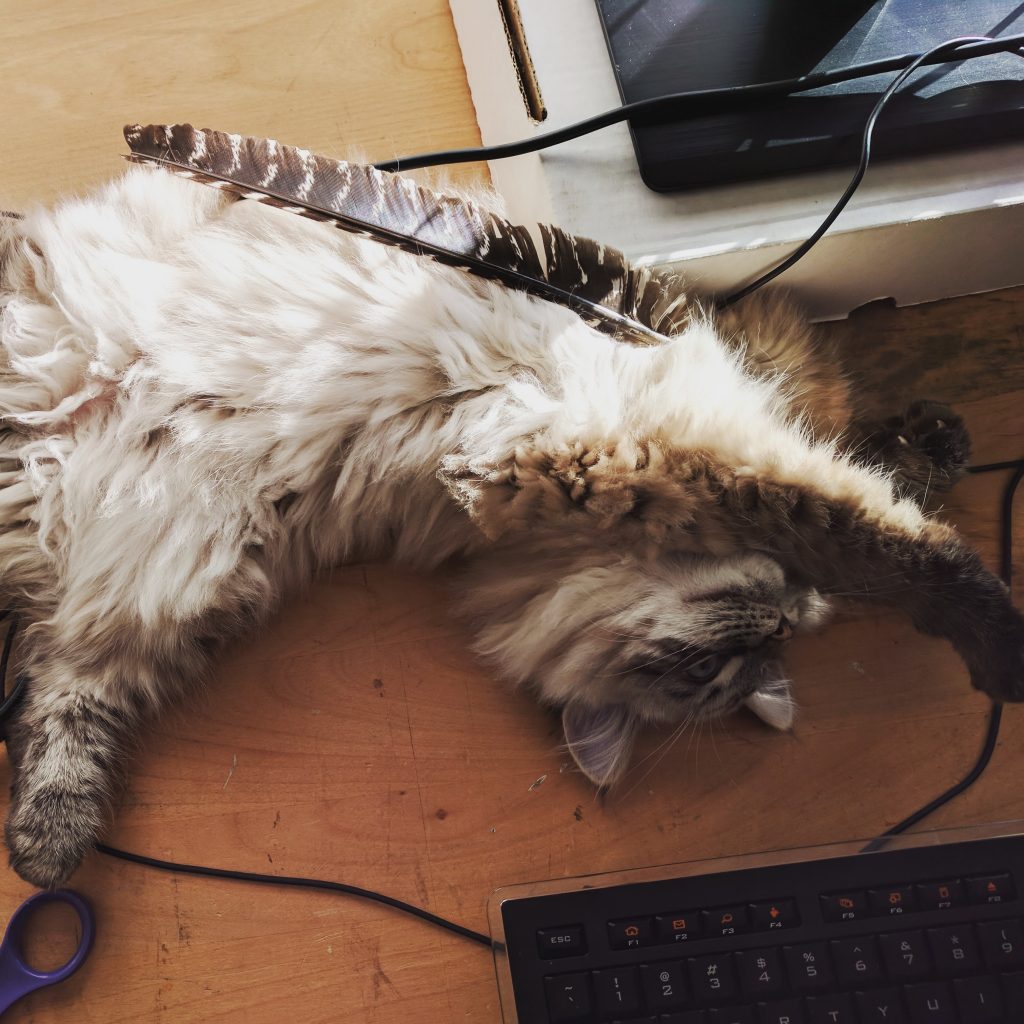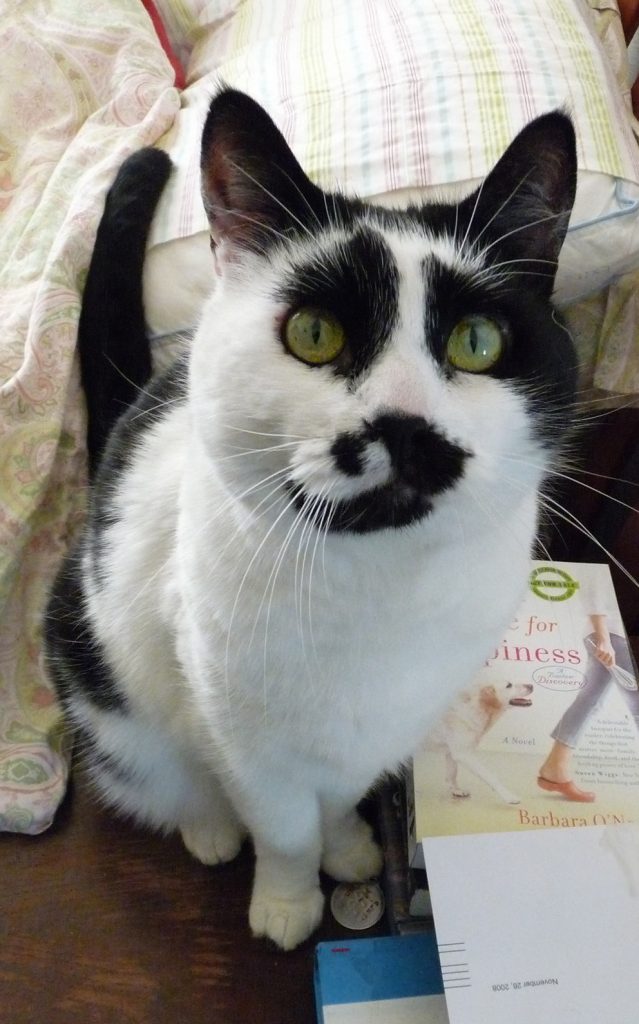There’s been building panic about grain-free diets causing dilated cardiomyopathy (DCM) in cats, resulting in vets pressuring clients to switch cats back to diets that contain grain, and it is absolutely driving me up the wall because my own vet is starting to do it to me. It’s especially aggravating because it a) misrepresents the science and b) flattens the topic into insensibility.
Spoiler alert: grains in their diets are not magically protecting kitties from dilated cardiomyopathy. That makes absolutely zero sense because cats have eaten negligible amounts of grain throughout their evolutionary history. There are other factors at play, and the two big ones are probably: 1) the cats are being fed unbalanced diets, or 2) because they’re being given diets high in legumes—technically pulses, which are the edible seeds of legumes. Think beans, peas, and lentils.
The Deal with Dilated Cardiomyopathy and Diet: What Cat Studies Show
So first of all: dilated cardiomyopathy. It’s a heart disease that causes the walls of the heart chambers to stretch, making them thin and fragile. In cats, it’s frequently caused by insufficient quantities of dietary taurine. Cat food manufacturers have known this for a very long time now and have supplemented accordingly.
However, the grain-free dog food crisis has—very understandably!—made people twitchy, and researchers have begun to look into how grain-free diets might affect cats. I’ve been able to find one cat-specific study in PubMed: “Dilated cardiomyopathy in cats: survey of veterinary cardiologists and retrospective evaluation of a possible association with diet.” ONE study. One. It’s a survey of feline cardiologists, and here’s a quick summary of what they found:
- The sample size is very small: 52 cardiologists were surveyed, covering 37 total cats with dilated cardiomyopathy
- 20 of 37 cats ate a low pea/lentil diet, 14 ate a high pea/lentil diet, 3 had incomplete diet information
- After adjusting for other variables, the cats eating high pea/lentil diets but who subsequently switched to low pea/lentil diets lived significantly longer
I don’t have access to the full study, so it’s unclear whether the survey asked whether the diets were home-made vs. commercial, which brands they were, whether they were wet or dry formulations, and whether the cats surveyed suffered from other risk factors, but one of the takeaways certainly seems to strongly imply that diets high in pulses are implicated in higher risk in dilated cardiomyopathy, and switching to diets low in pulses improved mortality rates.
This isn’t new. We’ve known since 1995 that soybean protein results in lower taurine levels in plasma for cats. In fact, when I first started hearing rumblings of this in 2018, my immediate thought was “man I bet it’s the legume content fucking with taurine absorption.” I’ve had that link in my Long Guide for as long as I’ve had this website, so since 2009. To this day, I don’t feed significant portions of food to my cats if legumes appear high on the list, or if more than one species is listed. If the canned food lists “pea protein,” I straight-up don’t bother to buy it—it’s the main reason why I don’t feed Merrick.
But it’s also super important to recognize the limitations of this study! Among many other things:
- The sample size is tiny.
- We don’t know what the confounding factors are.
- Studies in dogs indicate that taurine deficiency/malabsorption may not be the main culprit, and that some of these diets may contain unnamed cardiotoxic compounds that may also cause DCM.
- It may also be the case that pet food manufacturers suck and either didn’t formulate the food properly, or did formulate the food properly but aren’t manufacturing them to standard.
But whatever the reason, it’s becoming quite clear that at least with dog food, and somewhat likely with cat food, that foods high in pulses are a bad idea.
Bean (and Pea, and Lentil) Counting: Dry Food
Here’s the thing about grain-free dry food: you need a binder of some kind in order to make kibble work. Not only is it essential for physical integrity, it’s needed in order to facilitate the correct sort of crunch. As a bonus, the cat food manufacturer gets to bump up their protein content; it’s not that different from adding corn gluten meal to a formulation. Additionally, and big caveat here that this is pure speculation and should absolutely be taken with a grain of salt, but fresh meat ingredients (i.e. without the word “meal” appended to them) are weighed on a wet weight basis, whereas beans and lentils come in dried form. What might end up happening is that once everything is cooked down, the pulses probably make up a much more significant portion of the protein than their positions in the ingredient listing suggest, potentially outweighing the fresh meat ingredients when all is said and done.
If you look at many of the top grain-free dry food brands, you’ll see tons of leguminous ingredients. Some examples:
Orijen has at least six different ingredients that are either whole pulses or derived from pulses. The culprits are listed right after the meat proteins—that’s pretty high on the list! These are the pulses they use in their formulations, appearing in different places and in different combinations depending on the flavor: Whole Red Lentils, Whole Pinto Beans, Whole Peas, Whole Green Lentils, Whole Chickpeas, Whole Navy Beans, Lentil Fiber, Pea Starch, Whole Yellow Peas.
Wellness CORE uses peas and pea protein, generally listed somewhere between third and fifth position in the ingredient list depending on formulation, which, man that is extremely high on the ingredient list.
Petcurean GO! uses an assortment pulses starting anywhere from 3rd to 11th position, depending on formulation: Peas, Lentils, Pea Flour, Chickpeas, Pea Fiber.
Purina Beyond uses Pea Starch, Pea Protein, and Pea Fiber, starting as early as second position in some of the formulations. Ugh.
Purina ONE uses Pea Starch, Pea Protein, and our old friends, Soybean Meal and Soy Protein Concentrate, starting as early as third position.
American Journey, the house brand for Chewy, uses Pea Protein, Peas, and Pea Fiber.
Blue Buffalo Wilderness uses Pea Protein, which is listed as high as third position, as well as Peas and Pea Fiber.
Crave uses Pea Protein and Split Peas, again listed as high as third position.
Taste of the Wild uses Peas (second in the ingredient list for at least one formulation) and Pea Protein.
Dr. Elsey’s CleanProtein, which I feed Beckett as very small part of a diet that’s mostly wet food, uses dried chickpeas in either seventh or eighth position, with the exception of the chicken flavor, which has no pulses at all, or honestly any discernible source of starch, which is a bit weird and makes me wonder if it’s a label fuck-up. They claim that 90% of the protein comes from animal sources, but a) there’s no practical way of verifying that, and b) that says absolutely nothing about their starches. Going forward, I’m gonna feed Beckett only the chicken flavor if I can possibly help it. To be clear: I’m only comfortable feeding this to Beckett because, again, the vast majority of his food comes from wet food that’s largely free of pulses.
Look, I could go on, but it’s really clear at this point that pet food manufacturers swapped out one source of starch for another to make their kibble, potentially with disastrous results. In my last blog post I was like, oh man, I think I was wrong about dry food sucking for cats. You know what? I retract that. Dry food still sucks for cats, and grain-free dry food is potentially dangerous because so much of it depends on pulses to make the kibble, well, kibble-y.
Wet Food Still Sucks Less, More News at 11
Now, what about wet food? No surprise here: it’s much, MUCH easier to find formulations that are free of pulses, because structural integrity isn’t a concern. My quick and extremely unscientific survey shows me that pate-style foods are somewhat less likely to contain pulses than the minced/bits styles—I discovered that the Wellness Minced and Gravies formulations, which I feed to my cats on a rotating basis (about 20% of their diet), contain dried ground peas. Ugh. Once I finish up what I have, I’m gonna either ratchet it down to 10% or drop it entirely.
Beware the Potato?
Foods high in potato have been implicated in the DCM cases for dogs, but it’s unclear what effect, if any, they have on cats. I’m curious to see whether there’s some kind of connection. Nothing I’m feeding contains any significant quantity of potato, so the question is moot for me, but it is an important component for several grain-free dry food formulations.
Keep Calm and Feed Your Cats Sensibly
Why are vets banging on about switching cats to diets containing grain instead of focusing on a different and, in my opinion, better guideline, which is “avoid feeding cats pulses”? Because it’s a way easier message to sell, even if it’s incomplete at best and incorrect at worst.
Look, I get why they’re doing it; many people don’t know what pulses are, and saying “feed grain-based food” is way easier than giving cat caretakers a list that says “no soy, peas, lentils, beans, or chickpeas.” And for real: good luck finding grain-free dry that doesn’t contain any of those things. I have found exactly one, and it’s expensive.
It’s also difficult to talk to people, especially people without science literacy, about things like confounding factors, and uncertainty, and the limits of extrapolating research largely conducted on dogs to cats—but it’s also on vets to engage at a more detailed level with customers who are more interested in digging deeper into the science.
So what are some sensible approaches to feeding your cats, given this information?
- If you’re only feeding grain-free dry, seriously think about switching to something else, unless your grain-free dry contains no pulses.
- If you’re feeding a mix of dry and wet grain-free foods, check your ingredient lists for pulses and weed out as much as you can.
- If you’re feeding a home-made diet, whether cooked or raw, please, for the love of God, make sure that you’re following a reputable recipe, or, if you’re going off-road, please crunch the numbers on what you’re making. The USDA National Nutrient Database exists and is your friend, though you’ll have to find bone-in data separately if you’re feeding that. Supplement with taurine pills if you need to.
- As always: feed as wide a variety a diet as you can at all stand, with as much wet food as possible. I’m on the very far edge of feeding a wide variety of food; about 40% of my cats’ diet is home-made raw, and the remaining 60% is rotated between four different brands, with three to four different flavors within those brands. It’s a bit nuts! But look, pet food manufacturers fuck up and cut corners all the time; I’m counting on the fact that they won’t all fuck up at the same time, on all of their flavors.
Most of all, don’t freak out if you find that you’ve been feeding your cats food containing pulses. There are so many different factors here, from your cat’s biology to how the ingredients were processed to how big a portion the pulses are as an overall portion of the diet. This is not an acute emergency; assuming your cat doesn’t congenitally have DCM, this is, by and large, a problem caused by chronic malnutrition and which is honestly extremely addressable with diet and supplementation, assuming no health crisis is nigh. I, for one, am not especially worried about my cats. Once my old food runs out, I’m going to make a few small tweaks. Don’t make any rash decisions!
And as always: when in doubt, listen to your vet, not some stranger on the Internet, no matter how strong their opinions may be. I’m frustrated with mine right now, but hopefully yours is willing to talk to you reasonably and in detail about what’s going on.
